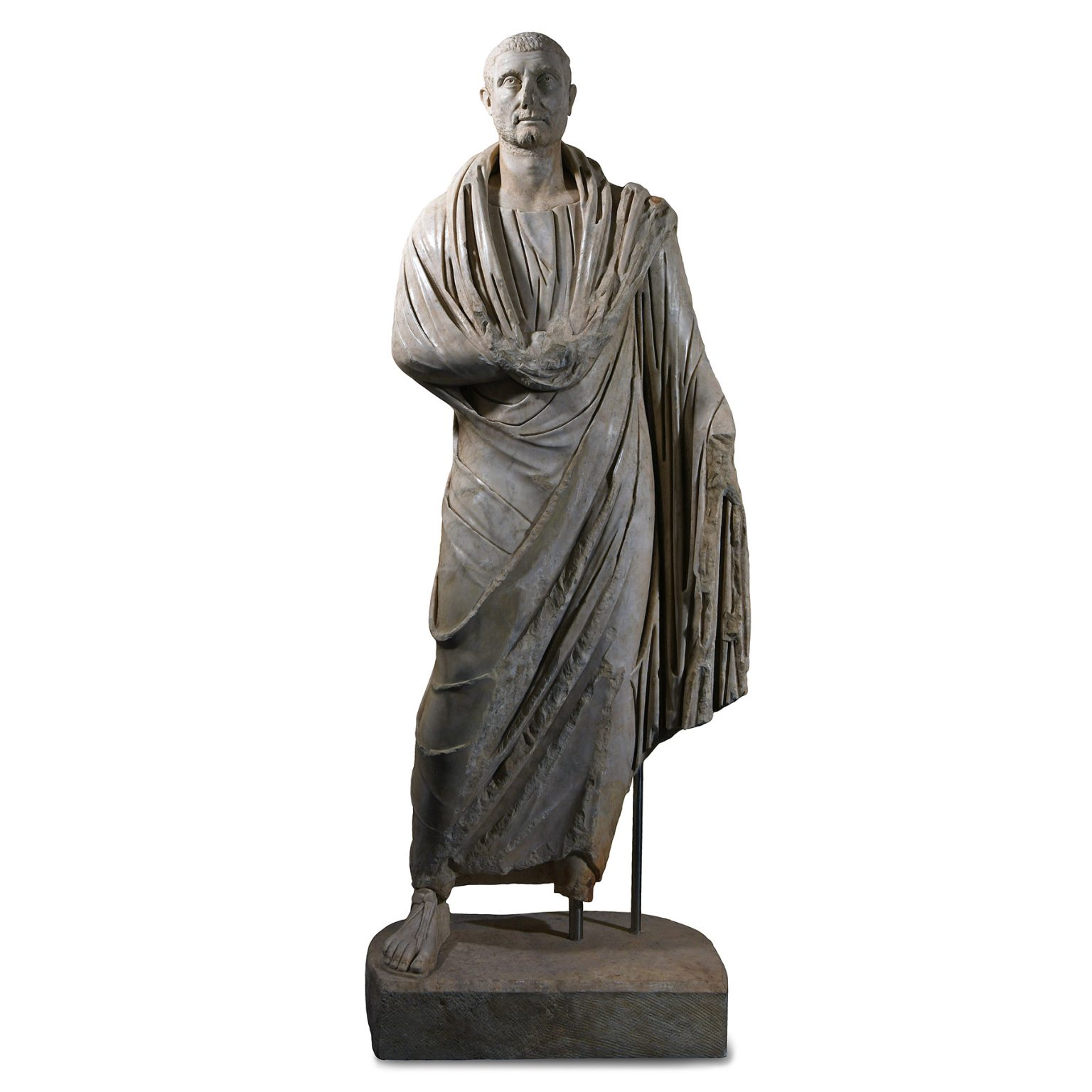| An incredibly rare life-size ancient Roman statue of a magistrate is to be sold at a UK auction house and is expected to make up to a quarter of a million pounds.
This miraculous survivor of Roman culture and art was purchased by a German collector around 50 years ago and has remained in the family until now. Timeline Auctions – a specialist saleroom of ancient objects and treasures based in Harwich, Essex, – has been chosen to sell the astonishing item. The sale takes place online from June 3-7. It depicts a high ranking magistrate from the 3rd-4th century AD and he is wearing a toga that originally would have been painted.Of particular interest are the facial features, which include a detailed beard and dimple in the chin. Aarond Hammond from the saleroom said: “This is a very rare item and we feel privileged to have been chosen to sell it. “We don’t who he is but it dates from the time of Emperor Diocletian when artists drawing the human form began to show a concern for geometry and symmetry. It most likely represents an official of an Eastern city, either in Greece or Illyria, and it would make a powerful talking point object wherever it was installed.” “Almost entirely intact, the statue is of an outstanding quality, and unlike other late Roman sculptures, in which a portrait head is often attached to an earlier body, it appears to have been created as a whole. “It shows exceptional attention to detail, including in the magistrate’s beautifully carved footwear. The statue stands almost 7ft high with the plinth and it is likely to be of interest to collectors but also museums and institutions.” TV antique expert Tim Wonnacott said: “This is an exciting object – a life-size model figure of a Roman. “He looks as if he ought to be an emperor but in fact he’s an important official – a magistrate. It’s wonderful to see him proudly wearing his toga and I particularly like the hatched nature of his beard and the dimple in his chin; Kirk Douglas eat your heart out.” The right hand is covered by the robe and rests against his chest, the now lost left hand probably held a rank symbol or a scroll. The hair is cut short, according to the style of the Tetrarchy, and he has wide eyes and pronounced lips. A similar style can be seen in official portraits of Diocletian, Galerius, Constantinus Chlorus, and Maximianus Herculius. The online sale will take place on 3-7 June and it also includes a number of other ancient treasures.
|
|
Besides the Roman sculpture thare are a number of other fascinating items for sale including this massive Roman Mosaic flooring with a sea image on a black background featuring nereids and tritons circa 270 – 350 A.D. 63×59 inches. Estimate £60,000 – £80,000. The nereids’ ride on the backs of fish tailed Tritons across the sea, a scene that includes a Centaur. The Greek inscription reads Safe fishing and harbour for mooring. These sea themes were very popular across the whole Roman Empire.
|
|
Romano-Egyptian painted portrait on linen 1st-2nd Century A.D. estimate £30.000 – £40,000. The figure of a young man on his funeral shroud in the guise of Osiris holding implements of his divinity. These images of the dead, painted on the faces of mummies, are one of the most wonderful legacies that the Graeco-Roma world has left us. These encaustic paintings have left us an almost photographic like testimony of the inhabitants of that world. We see in this face image of people and types of people we recognise from our own world. One is left wondering who was this man captured on linen in an almost photographic detail?
|
|
Viking Iron silver and laten inlaid sword from the 9-11th Century A.D. How many men has the sword slain, Made by UlfberhT, the Rolls Royce of sword makers. Estimate £15,000 -£20,000. A double-edged sword with a tapering blade and wide cutting edges and a pommel inlaid with silver and copper
|
|
Ancient Greeks and the tendency to party. How they celebrated and drank their pints! Estimate £10,000 – £14,000 for this Greek Archaic Black figure kylix with an inscription, a party drinking vessel 550-530 B.C. The Greek inscription reads ‘rejoice and drink well’. With a broad flat foot and short stem, it would have provided a fair number od glasses of wine. |
